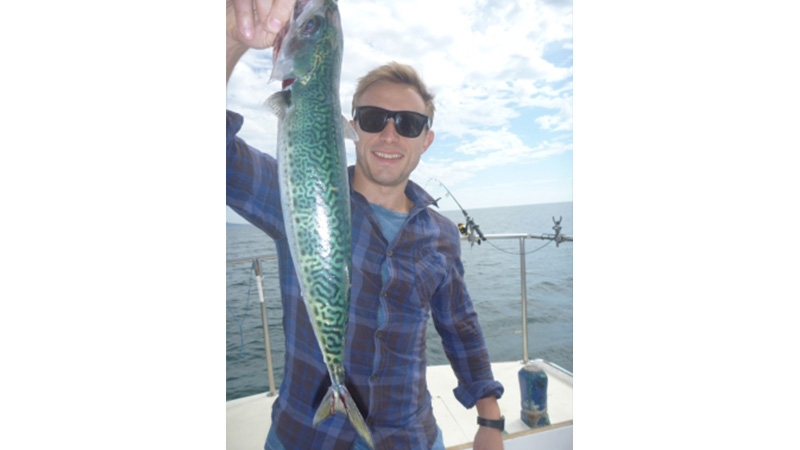

Jack Mackerel
- Scientific Name: Trachurus decliris& Scomberaustralia lasicus
- Bag Possession: 40
- Size: no minimum
- Member of the Carangidae family (as opposed to Mackerels that belong to the Tuna family)
- Closely related to the Yellow Tailed Scad
- Other names: Common Jack Mackerel & Greenback Horse Mackerel
The Jack Mackerel are located around Western and Southern Australia plus New Zealand. In these cooler temperate waters, Mackerel can grow up to 64 cm in length. They average in size in Port Phillip Bay between 30 to 50 cm. The Mackerel mature between 3 & 4 years of age, at a length of about 27 cm. A fish that is 64 cm has likely lived 25 years.
The body is elongated and almost clyndrical. Mackerel have a large head and very sharp teeth. They are dark bluish-green in colour tending to a silvery-grey below with a yellowish tinge on scales and fin. There is a noticeable dark blotch at the rear of the gill cover.
Adults feed during the day, mainly on Krill & Crustaceans. Guests on the Plover find chicken to be an unusual but great bait to catch these fish. They are fun and you have to be quick to land them on board.
Mackerel are an important commercial fish and is known to be sold overseas to be used as fertilizer or bait. Recently Jack Mackerel has become popular as a food product with many national and international chefs using Jack Mackerel as their culinary delight. Just as happened with crayfish many years ago, the Mackerel have become fashionable and can be seen as the stars of popular cooking shows. They sell for $49.99 kg at the fish market. As an oilier fish, Mackerel is best cooked on a grill BBQ or eaten Sashimi style.
Recipes for Bay Fish N Trips' guests:
1. Clean the fish by gutting and removing scales. Wrap each fish in foil and place on the BBQ for 10-15 minutes until steaming. Open the foil package and grind a bit of black pepper and a squeeze of lemon. Et viola!
2. Alternatively, fillet the fish and just cook them on an open grill. Add a small splash of Olive Oil and sprinkle with some pepper.
3. Or, Sashimi style. After filleting the Mackerel, cut very thin slices at an angle off each fillet. Serve with Wasabi & Soy.
(Source: Wikipedia, DEWLP, Fishes of Australia & Bay Fish N Trips)
